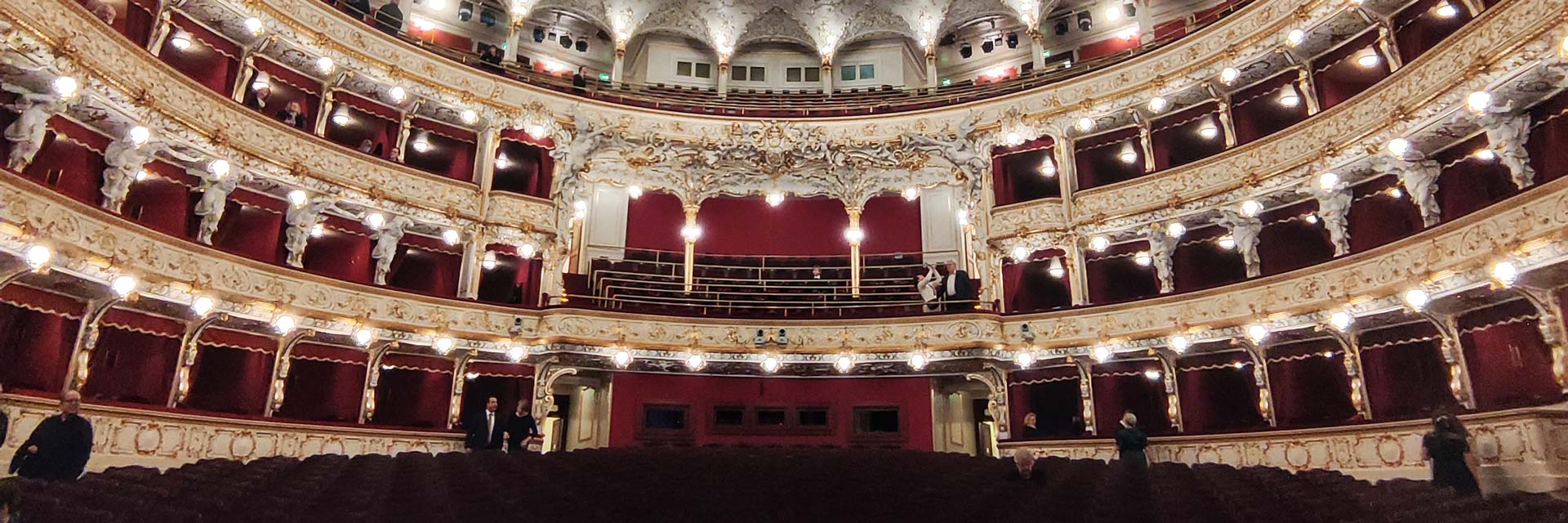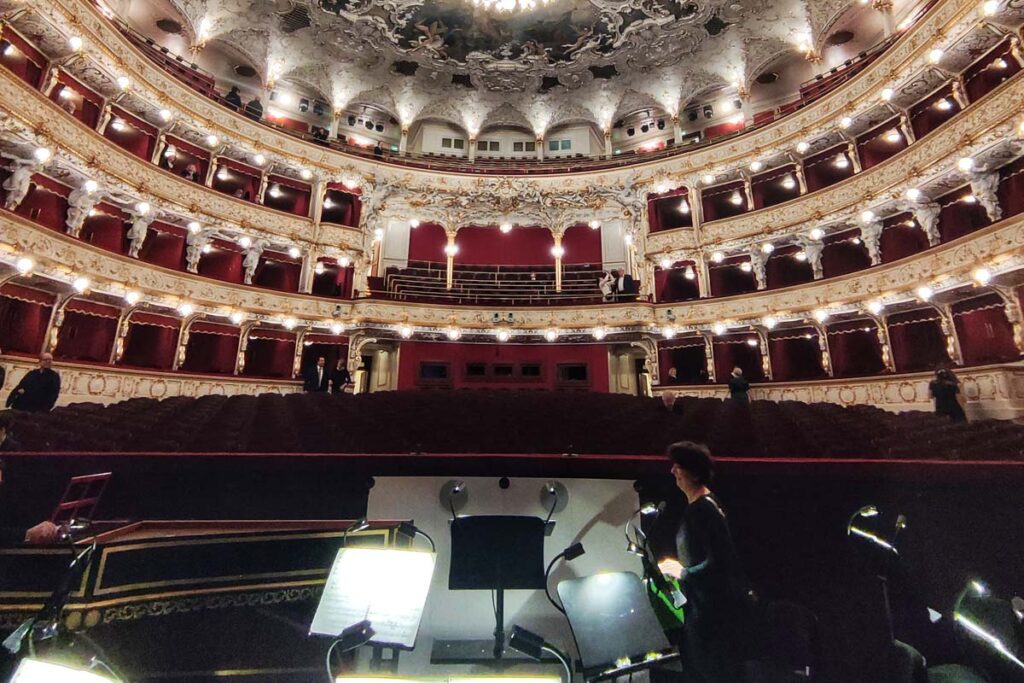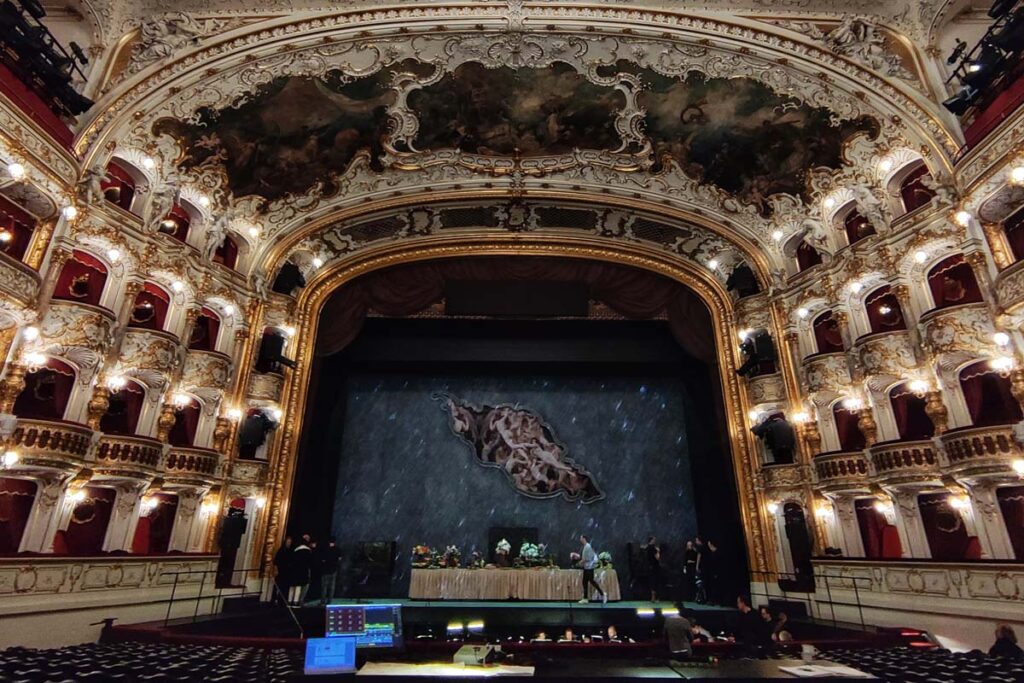Today, we’re visiting a completely different venue: not a studio, nor a hall familiar from many recordings, but an opera house.
What’s more, it’s one that hasn’t really been recorded in before. So why is it appearing in this series? Because we’re not all homebodies; we like to travel and experience new things. Like going to the opera, for example. And when we do, then to this one, please. Because Karl Böhm, Gustav Mahler, Otto Klemperer, Erich Kleiber, Richard Strauss, George Szell, and many others were certainly not wrong to gush about the Státní Opera in Prague and come back as often as they could.
Built in the Neo-Renaissance and Neo-Rococo styles (yes, a wild but thoroughly appealing mixture) and opened in 1888 as the German National Theater, this building experienced a very eventful and not always pleasant history over the next 100 years. Blind nationalism on both sides repeatedly plunged this beautiful theater into senseless political strife, and often enough the building itself became a political issue, which is actually quite absurd.
After a series of rebuildings and renovations, all of which were improvements for the worse, this beautiful opera house was restored to its original condition between 2017 and 2020 as part of a general renovation, proving such an undertaking to be evidently possible (looking at you, dear city of Cologne!)
The result is one of the three or four most beautiful opera houses in the world, a theater that seems to have been dreamed up rather than built, an oasis of peace and beauty in this world.
One could spend time in the stairwells and on the open staircases alone, if it weren’t for the lure of the performance. The auditorium has been renovated with great care and attention to detail, the old decorations have been recreated based on historical photos, and the lavish use of hammered metal and stucco demonstrates cheerful opulence. At the same time, the auditorium capacity has been reduced to 1,041 seats to accommodate more comfortable chairs and knee-friendly row spacing. Modern technology has also been discreetly incorporated, with each seat having its own monitor providing information about the performance in several languages, including a summary of the work. The acoustics are fascinatingly good in all seats, with only the seats at the edges of the stalls favoring low frequencies a little too much, which is why it can get quite rumbling there during certain pieces.
Since all seats offer a good view, which is not the case in every opera house, you can purchase tickets without much concern.
It should also be mentioned that the cafeteria is pleasant, the cloakrooms are spacious, and the distances are long. More importantly for you, however, is that there is hardly any other city where you can eat and drink as well as in Prague. After the opera, however, avoid walking towards the center via Wenceslas Square. It is better to walk around the opera house and cross the city ring road to find yourself in a no less beautiful and historic district full of first-class bars and restaurants. However, with more normal prices, hardly any tourists, and menus in Czech.



